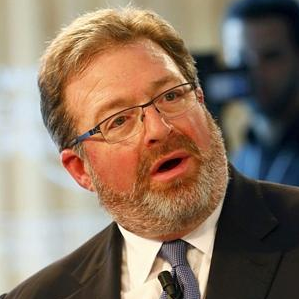News
Thomson Reuters 'rewires' its core functions
Friday 31 July 2015

Thomson Reuters is to centralise its core functions and accelerate a switch to common technology platforms and tools across the entire business.
The changes are part of the company’s programme announced nearly two years ago to transform its disparate operating units into one global enterprise. The programme aims to save $400 million annual costs in 2017.
Significant progress has been made in building a company that is better positioned to achieve sustainable growth, chief executive James Smith (photo) said in a message to the group’s 53,000 employees.
The tangible result of those efforts was seen earlier this week when the company announced its second quarter results, he said. They were better than expected by analysts who follow Thomson Reuters and prompted two days of increases in its share prices on the New York and Toronto stock exchanges.
The next step in the transformation will be to create greater alignment in the company’s enabling functions which will be pulled back to the centre of the group. At the same time, it will move even faster to deploy common technology platforms and tools across the business.
“To me, these are essential steps along our path to accelerated growth,” Smith said.
Over the next few months, a new operating model designed to bring together common capabilities and expertise across the group will be implemented. This means finance, legal, human resources, strategy and communications organisations within the group will be run as integrated company-wide units.
“This change will allow us to improve consistency, share best practices faster, add transparency, shift investment to growth priorities and engage our talent with new challenges and opportunities. Our new operating model is about rewiring the organization to bring more resources, expertise and effective practices to our Business Units, and by extension, our customers.”
Smith said there were no changes to the leadership of the group’s enabling functions.
To speed the move to common platforms and tools, the technology organisations of each business unit will report to interim chief technology officer Stewart Beaumont.
Richard King, chief operating officer, technology, will continue to focus on overseeing core technology operations and infrastructure and will report to Neil Masterson, chief transformation officer. Masterson will also assume responsibility for all global operations centres from the global growth and operations unit.
Brian Scanlon, chief strategy officer, will also take on additional responsibilities. Along with more direct control of strategy resources, he will coordinate a growing number of key strategic partnerships and “oversee the consistent application of our corporate brand around the world”.
Masterson, Scanlon and a senior team will be based in Baar, Switzerland. “We will build a true Enterprise Centre focused on operational excellence, enabling us to support our global operations and customers from a central time zone,” Smith said.
All changes will take effect on 1 January 2016.
They do not represent a major reorganisation of the company, Smith said, “but rather a formalisation of the new way we have begun to work with each other to deliver the full power of the enterprise”.
He added: “We have come a long way in the past few years. I believe these next steps will help us deliver even greater value to our customers, accelerate the growth of our business and make our organization an ever more exciting and dynamic workplace.” ■
- SOURCE
- Thomson Reuters
- « Previous
- Next »
- 924 of 2174